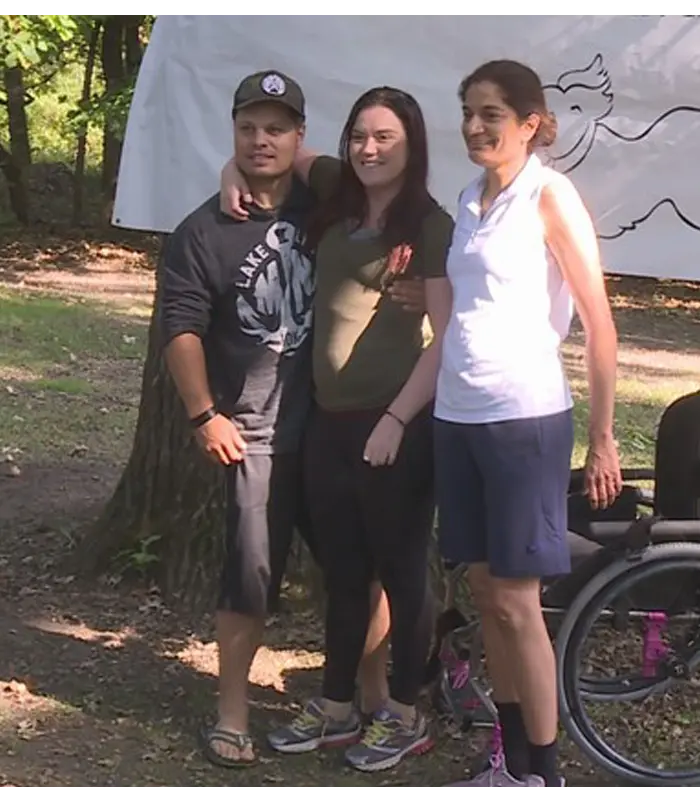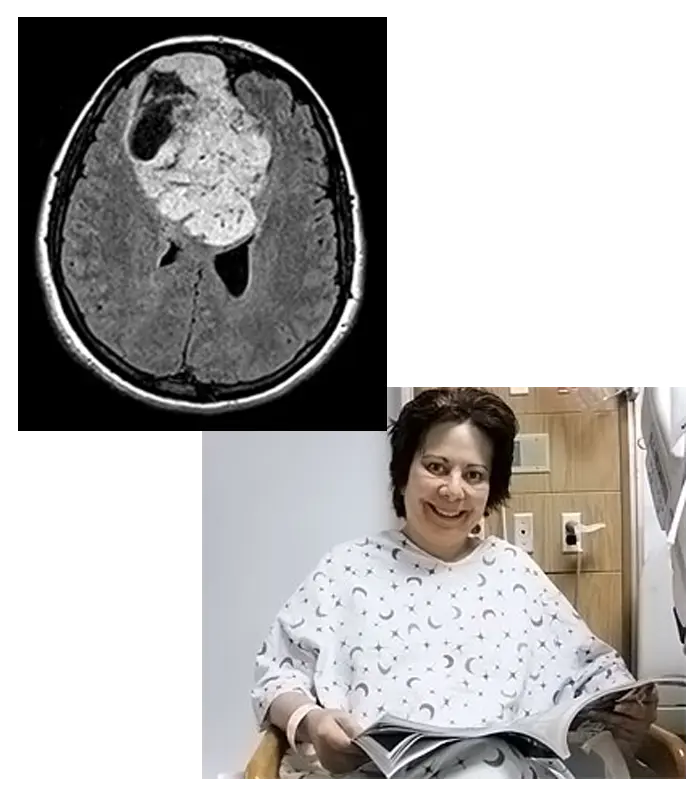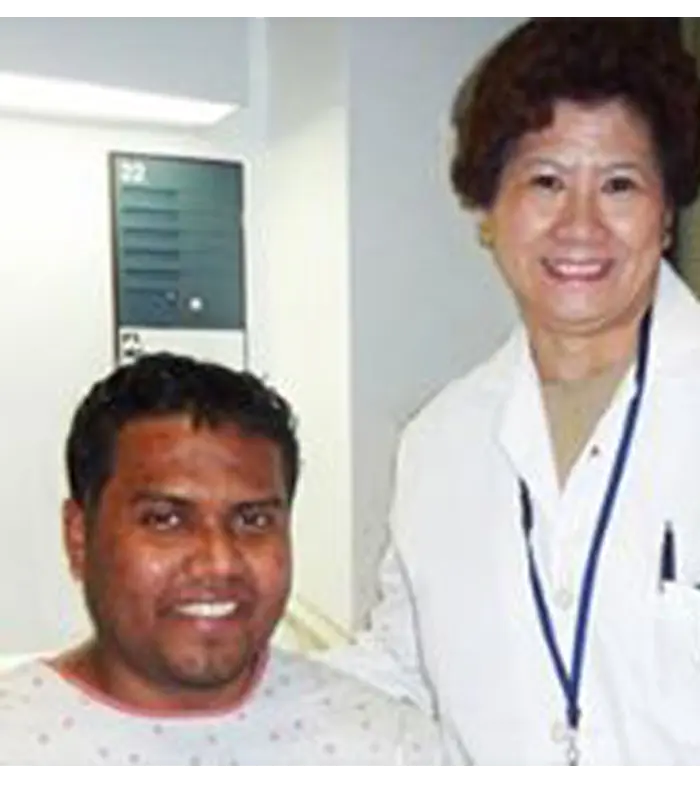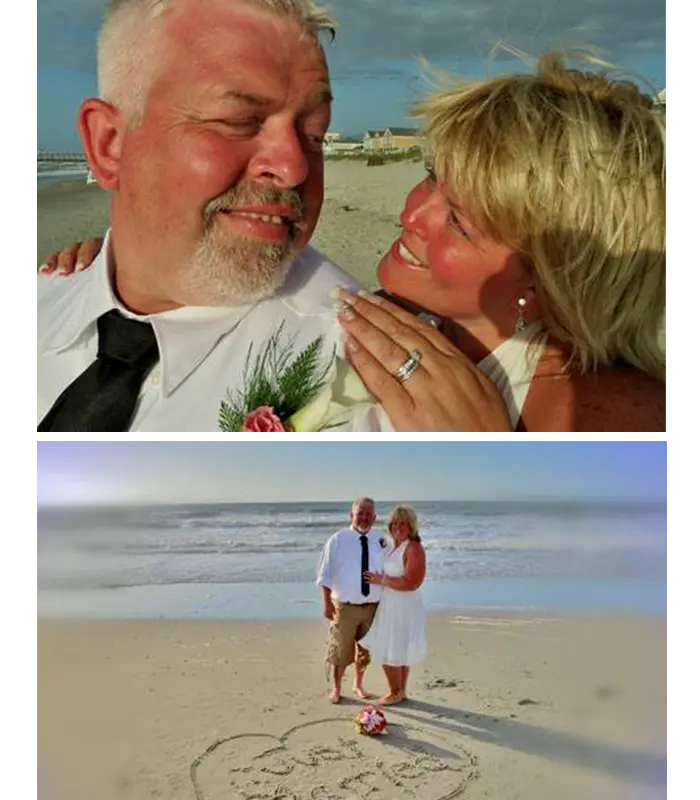
Woman Recovers After Paralysis From Hammock Accident
A dog walk and run through the woods in Maple Plain on Sunday to raise money for brain and spinal cord injury research at Hennepin Healthcare brought together supporters and patients. Patients like Alyssa Pfannenstein, who participated in a trial at Hennepin Healthcare after the accident that injured her. It's been one year since Alyssa and her boyfriend, Justin Janssen, climbed into their hammock in a Bemidji park to watch her daughter, Abiliene, play. They didn't realize the tree they tied it to was rotted on the inside. It snapped and landed on Alyssa, breaking her neck.
"I instantly knew I couldn't feel my legs," Alyssa said in October 2017 when we first met her at a Twin Cities hospital. By then she could feel her legs, but she couldn't move them. Since then, she has made lot of progress. She can stand with the help of Justin, who's been with her every step. And with the help of her rehab specialists, she now can put one foot in front of the other and walk up to 200 feet, once a week "I was so shocked and amazed," Alyssa said. She has been positive from the beginning, and that hasn't changed.
"I am surprised but that the same time I always believed I would be. From day one, I just knew I was going to get better, I was going to be able to walk again," Alyssa said. And at this event, as she sees so many others like her who've overcome so much, she's perhaps more optimistic than ever. "I plan to get completely better. I would love to make a full recovery and I think it's possible," Alyssa said.
Dr.Samadani Uses 3D Imaging to Tailor Brain Tumor Surgery
Gulf War Army Veteran and former legal secretary Sandy Kemp had severe headaches and blurry vision for years. The doctors diagnosed Kemp with a brain tumor - the size of a grapefruit, that filled the right frontal corner of Kemp’s skull and crossed over to the left side.
Neurosurgeon Uzma Samadani, a veteran surgeon of more than 1,000 brain tumor operations, decided that surgery, while risky, needed to be done as soon as possible. “The tumor was pushing her brain down and trapping the fluid-filled spaces in the brain.” Kemp named her tumor “Harvey,” and knew he had to go.
Dr. Samadani’s six-person surgical team removed “Harvey” in a 5 ½ hour operation with serious risks, including a stroke in areas of the brain important for movement, personality, memory and awareness. Fortunately, a newly acquired three-dimensional imaging system enabled the surgical team to pinpoint as well as remove the tumor. The procedure was a great success thanks to meticulous planning and Dr. Samadani’s neurosurgical expertise aided by three-dimensional imaging available with the new imaging system — called the “StealthStation S7” navigational. “The S7 was extremely helpful in helping us determine where the margins of the tumor were, relative to a normal brain,” Dr. Samadani explained.
Kemp returned home to Pennsylvania six days after the surgery. “It was really time for Harvey to go,” she said. Kemp says the only difference she detects since the surgery is that now she can’t smell well. Joking that today she feels “finer than frog’s fur,” Kemp is looking forward to heading to Colorado where she plans to train to be a veterinarian’s assistant.


Brain tumor is no match for Dr. Samadani
Her patient, Tommy Alexander Baijnath, is one of those proud young Army soldiers who started experiencing terrible headaches and was suddenly losing an alarming amount of weight. Medevaced to Landstuhl, Germany, and was diagnosed with brain tumor. The tumor was removed and a piece of his skull was replaced with methacrylate cement.
Two years later, Baijnath had to face the fact that his symptoms were back with the regrowth of the tumor, Baijnath was scheduled for surgery with Dr. Samandani. The walnut-sized tumor had grown back and was invading the sagittal sinus – one of the largest draining veins of the brain.
Baijnath’s surgery was helped by the use of two new technologies – one for image guidance during removal of the tumor, and the other relying on a computer generated reconstruction of the skull. StealthStation7's visualization technology helps Dr. Samadani by giving her information about the location of the tumor via 3-D pictures of it inside the brain as she operates. Once Dr. Samadani was confident that the tumor tissue was removed, a further step in the operation involved the placement of a custom-made skull plate attached with screws to “patch” the skull that had become distorted as a result of the earlier operation. And, Baijnath was smiling preparing to return home a few days after this complex, successfull surgery.
Wedding checklist: Surgery
Army Veteran William Young and his fiance, Julie, have known each other since the age of 18. Two decades later, they had been engaged for five years and made plans to get married on July 4, 2013.
He had been experiencing moments when his vision was abnormal in that he would see an aura followed by intense migraine headaches. As the migraines came more frequently, the Port Jervis, NY resident consulted with his doctor. An MRI scan revealed a brain tumor the size of a plum, arising next to the largest blood vessel in the back of the skull, nestled up against the part of his brain controlling vision.
"When I talked to Mr. Young and his fiance in our clinic on May 15th, they told me they were scheduled to get married on July 4th. I was not sure he would recover from the surgery that quickly, so I asked him if he'd rather wait. "I wanted the wedding to be just the way we planned," said Young. So on his fiance's birthday, June 4th, Young had the tumor removed from his brain by Dr. Samadani and her neurosurgical team in a four hour operation that risked damage to the largest draining blood vessel of the brain, and the area around it that controls vision.
One month after the surgery, right on schedule, the childhood sweethearts married on their favorite beach in Surfside, South Carolina. "When I told him he could raise a toast to his new wife and celebrate in all possible ways, the happiness in their faces was what makes practicing neurosurgery the best job in the world."
